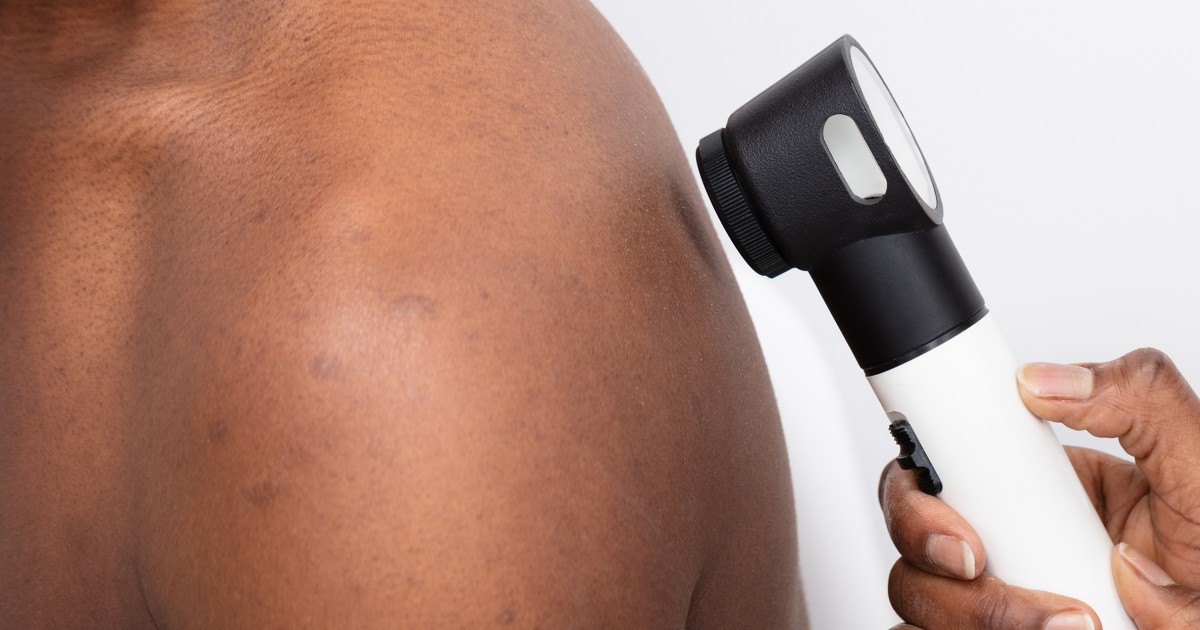
Black men are at a higher risk of death from melanoma than other racial groups, according to a study published Tuesday in the Journal of the American Academy of Dermatology (JAAD).
Across 205,125 cases of male patients diagnosed with cutaneous invasive melanoma from 2004 to 2018 tracked by the National Cancer Database, the five-year survival rate was the lowest for Black men at 51.7%. The rate of survival was the highest for white men, at 75.1%, compared to the other racial groups in the study.
White men are more likely to get melanoma, according to the CDC, the study found that Black people have a 26% higher risk of death from melanoma than the white population.
Cutaneous melanoma — a form of cancer that begins in pigment-producing cells — is the most aggressive and fatal form of skin cancer, according to the National Library of Medicine.
While gender and race are both predictors of survival in people diagnosed with cutaneous melanoma, less is known about the role race plays specifically among men; that is what the study explored.
Although it is not clear what factors contribute to an increased mortality risk for Black men with melanoma, the study found that Black men were less likely to have private insurance, and men more broadly were less likely to seek medical care than women, which can result in men being diagnosed at a later stage, according to Ashley Wysong, chair of the department of dermatology at the University of Nebraska Medical Center and a co-author of the study.
“Even after accounting for later stages at diagnosis, men still have worse overall survival rates than women with melanoma, so we suspect that there are some unmeasured social, genetic, tumor-specific and potentially biological factors at play, such as hormones and the way the immune system responds to melanoma tumors,” Wysong said.
Melanoma patients with darker skin often mistake their cancer for other skin conditions, which “can also delay care and definitive treatment,” she added.
Racial disparities have put Black patients at a disadvantage for years, with racial bias as a major factor. A 2019 study published in Science found evidence that racial bias in an algorithm used by health care providers affects the amount of money spent on Black patients and also labels Black patients as healthier than white patients who are equally as sick.
JAAD’s study also found that melanoma-related disparities also exist among Black women, who had the highest percentage of tumors in the lower-extremity, which include legs, ankles and feet.
Wysong recommends that people go to a board-certified dermatologist if they notice any lesions on the skin that are new, bleeding or not healing.
“We hope our research can lay the foundation for future studies to determine why there’s such a gap in survival rates, and to make headway to reduce these survival rate gaps,” she said.






